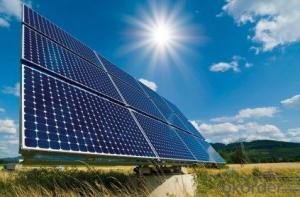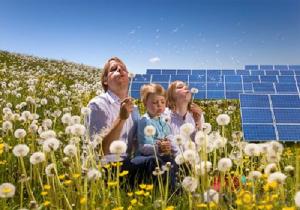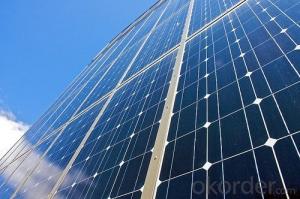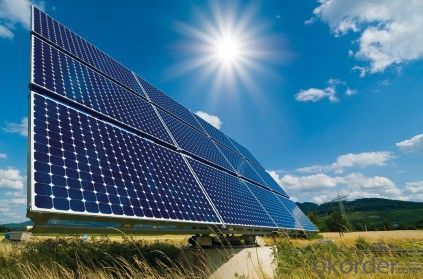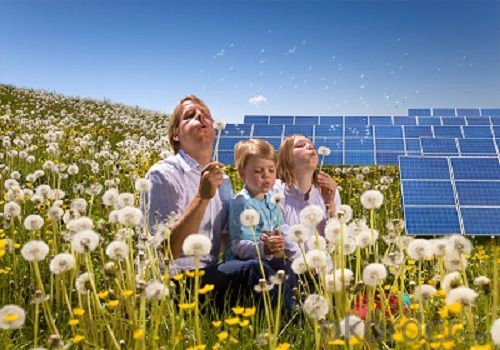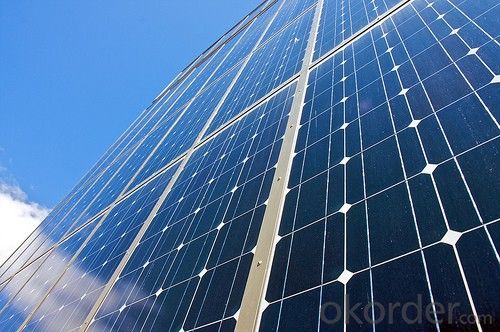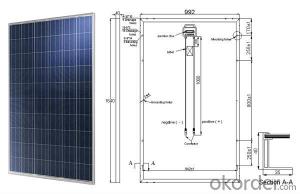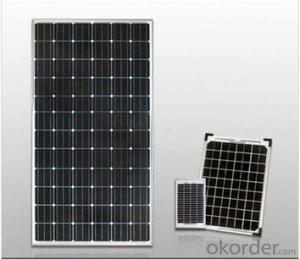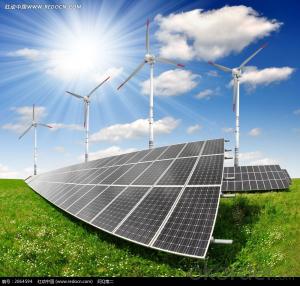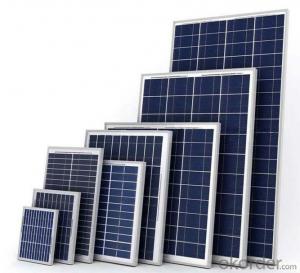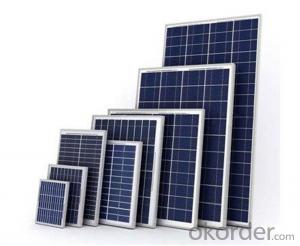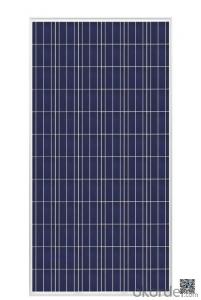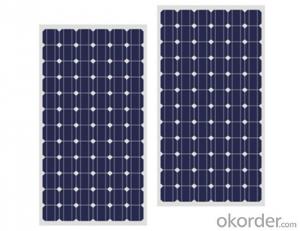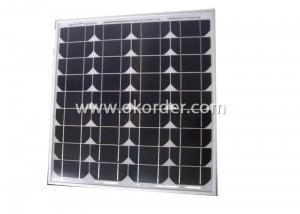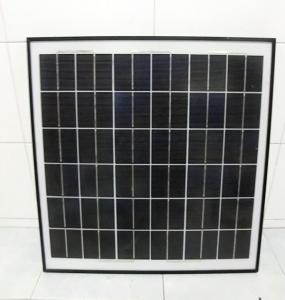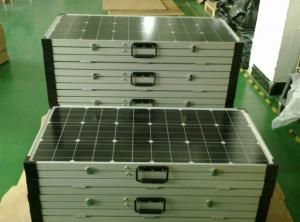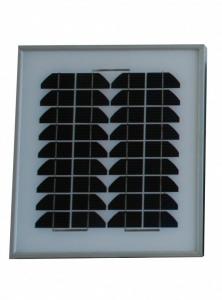DIY Solar Panels for Home - Mono Solar Panel Modules
- Loading Port:
- China main port
- Payment Terms:
- TT OR LC
- Min Order Qty:
- 10000 watt
- Supply Capability:
- 100000000 watt/month
OKorder Service Pledge
OKorder Financial Service
You Might Also Like
Specification
Solar Monocrystalline 125mm Panel Series(45W-50W)
Product Description
Monocrystalline Silicon Solar Panel (45-50W)
• 10 years 90% output warranty
• 20 years 80% output warranty
• High conversion efficiency mono/poly-crystalline amorphous silicon solar cells
• Modules incorporate high performance bypass diodes to minimize the power drop caused by shading
• High transmittance, low-iron tempered glass
• High performance EVA encapsulate to prevent destroying and water.
• AI frame: without screw, corner connection. 8 holes on the frame can be installed easily
• Good performance of preventing from atrocious weather such as wind and hails
• Certifications: CE IEC TUV VDE UL, Class I
Details
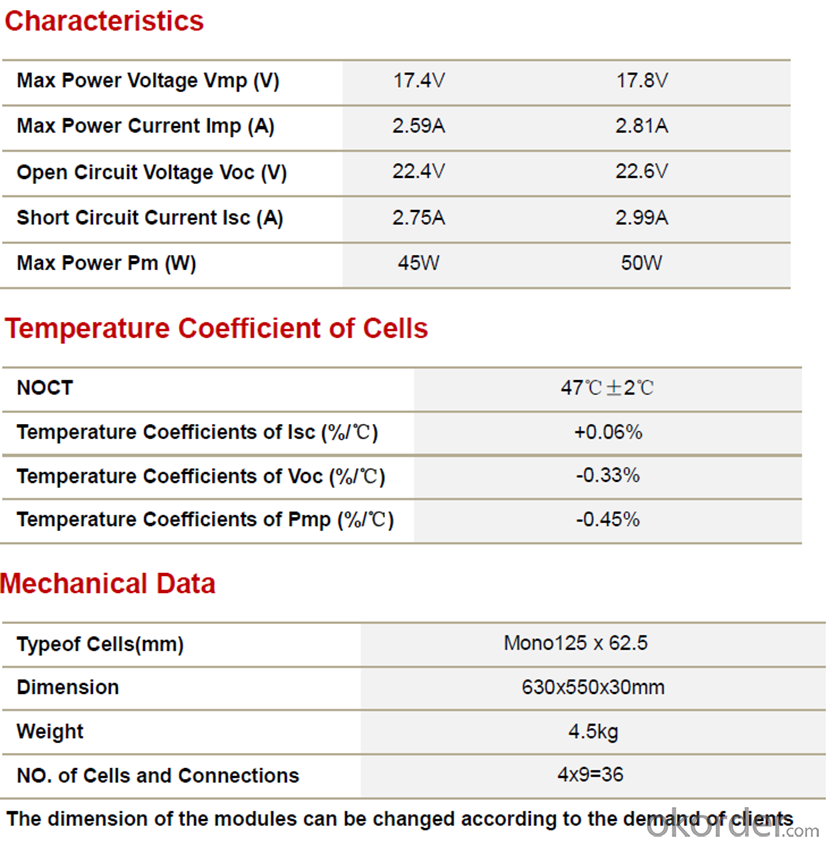
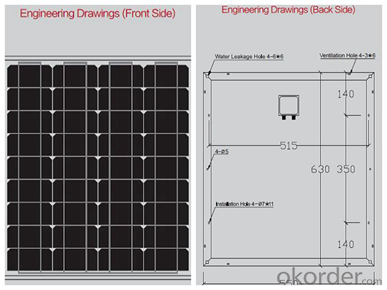
Certificate

Images

FAQ1
We have organized several common questions for our clients,may help you sincerely:
1.What price for each watt?
It depends on the quantity, delivery date and payment terms,
2.How do you pack your products?
We have rich experience on how to pack the panels to make sure the safety on shipment when it arrives at the destination.
- Q: What is the efficiency of modern solar panels?
- The efficiency of modern solar panels varies, but on average, it ranges from 15% to 20%. Some high-end panels can achieve efficiencies of up to 25%. However, it's important to note that the efficiency of solar panels is constantly improving as technology advances.
- Q: how much energy or electricity a solar panel produces?
- That okorder / They helped me a lot when I was pursuing solar. They will provide you with a free solar quote and give you all the information you need regarding eligible incentives, a feasibility analysis, your estimated annual savings, payback period, and return on investment. All in all, they will be able to provide you with everything you need to know in order to make a smart decision. Good Luck!
- Q: Hi, I have in my sailboat 2 2 V batteries. I would like to buy solar panel(s) in order to recharge them. As i am in mexico and there is always high sun . i think it is a good idea.Usage of the batteries is very light . I have found 5-2V pannels with 80mA that fit in the sailboat. I want to know if and how i can have like 5 to 0 of them set together to charge the batteries and what other material would i need.also, i would like to know what happend if the pannels only send on 5V in a 2 V battery? Is it still charging but on 40 % of the capacity a 2 v pannel would charge or its just not doing nothing ?
- 0 of the panels wired in parrell will give you enough power to trickle charge the batteries. You will need a charge controller to prevent a overcharge from damaging your batteries. A panel array that is rated at 2 volts actually puts out a unregulated voltage up to 2 volts. I have bought some charger controllers from OKorder at good prices. They will also prevent the discharge of your batteries at night or when the panels are in the shade. If the panels only put out 5 volts they will not charge the batteries. Check each panel outside in the sun with a DC volt meter for proper operation before connecting them.
- Q: Can solar panels be used in areas with frequent power outages?
- Yes, solar panels can be used in areas with frequent power outages. Solar panels generate electricity from sunlight, which means they can continue to produce power even when the main grid is down. However, for uninterrupted power supply during outages, it is important to have an energy storage system, such as batteries, to store excess energy generated during the day for use at night or during power outages.
- Q: Can solar panels be installed on water bodies or reservoirs?
- Yes, solar panels can be installed on water bodies or reservoirs. This is known as a floating solar power plant or floating photovoltaic system. It involves placing solar panels on floating platforms that are anchored to the bottom of the water body or reservoir. This innovative approach allows for the utilization of otherwise unused space, reduces evaporation, and provides cooling benefits to the solar panels, increasing their efficiency.
- Q: I have a cabin in the woods and need more light. I do have enough sun but I was wondering how or where do I get a solar panel to lead to a power outlet? In a perfect world I would like to get a solar panel with a connecting wire to an outlet or something so I could power a small TV. I know its hard enough but can I get that pre-made? Or even lastly should I look at wind power consider I would like this to be under $500? Thank you for putting up with this bundle of questions.
- First okorder /
- Q: how much energy does solar panels save you? (like a month, year, etc)
- It depends on the size of the solar panels and the intensity of the solar-light. So, there's difference in every place. It's impossible to answer unless there's detail of panel size, panel quantities, average rainfall, average solar days, etc.
- Q: Can solar panels be used in areas with high wind speeds?
- Yes, solar panels can be used in areas with high wind speeds. However, it is important to consider the structural integrity of the mounting system to ensure that the panels can withstand strong winds. Additionally, proper installation and maintenance are crucial to ensure the longevity and efficiency of the solar panels in such conditions.
- Q: Can solar panels be used in developing countries?
- Yes, solar panels can definitely be used in developing countries. In fact, they are increasingly being adopted as a sustainable and affordable source of energy in many developing nations. Solar power offers numerous benefits such as reducing reliance on expensive fossil fuels, providing electricity to remote areas without access to the grid, and promoting economic growth by creating job opportunities in the renewable energy sector. Additionally, solar panels can be easily installed and maintained, making them a viable solution for powering homes, schools, healthcare facilities, and other essential infrastructure in developing countries.
- Q: Can solar panels be installed on community centers or libraries?
- Yes, solar panels can be installed on community centers or libraries. In fact, many community centers and libraries have already adopted solar energy as a renewable and sustainable source of power. Installing solar panels on such public buildings not only helps reduce their electricity costs but also contributes to a greener environment by reducing carbon emissions.
Send your message to us
DIY Solar Panels for Home - Mono Solar Panel Modules
- Loading Port:
- China main port
- Payment Terms:
- TT OR LC
- Min Order Qty:
- 10000 watt
- Supply Capability:
- 100000000 watt/month
OKorder Service Pledge
OKorder Financial Service
Similar products
Hot products
Hot Searches
Related keywords
